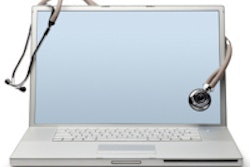
Our next destination on the Road to RSNA is a stop in healthcare IT for a preview of this year's presentations on reporting, critical results management, speech recognition, and radiation dose monitoring software.
Radiation dose monitoring is a particularly hot topic this year. Several researchers will describe success with various initiatives, including a real-time tracking display in the reading room to provide radiologists with immediate dose alerts; a software program that calculates organ dose from CT; and dose monitoring software for optimizing the ratio between radiation dose and image quality in a breast screening program.
Other presentations will, for example, highlight how dose monitoring software can help reduce pediatric x-ray dose and how cloud-based software offers potential for monitoring CT radiation dose across multiple institutions.
A number of presentations at RSNA 2015 will also explore ways to improve the quality and utility of the radiologist's main product -- the radiology report. Researchers will share the following insights: Orthopedic surgeons prefer structured reports for musculoskeletal MRI studies, hedging statements in reports can affect patient follow-up, and internal medicine physicians have different opinions than radiologists on the quality of their reports.
Other groups will report on how both radiologists and referring physicians benefit from multimedia reports, how natural-language processing technology can evaluate the "mood" of reports, and how structured reporting paves the way for epidemiological analysis.
In line with initiatives to increase the visibility of radiologists, researchers will explore ideas for being more directly involved with patients, including sharing how patients would appreciate the opportunity to review their imaging studies directly with imaging experts. One study also reported success in providing screening mammography results to patients within minutes of the exam being completed.
Not surprisingly, activity is also increasing in the area of clinical decision support (CDS) software. One group found that a pilot implementation was helpful in rolling out CDS, while another research team reported that adopting the software did not drive referrers away.
In other notable HIT research, two studies will show how setting up alerts on electronic medical record (EMR) software can help identify and manage patients at risk for allergies or nephrotoxicity from contrast media.
Those making the trip to Chicago will also appreciate how HIT is increasingly being deployed to enhance radiologist education. Efforts include developing a Web-based image viewer to provide interactive teaching files, a dashboard application to prepare residents for taking call, a new online teaching file for practicing reading head CT cases, and -- fittingly in today's social media era -- utilizing hashtags to enhance resident analytics.
See below for previews of these and other healthcare IT-related scientific papers and posters at this year's RSNA meeting. Of course, these are just a sample of the content on offer; a host of refresher courses and educational exhibits also await those who make the trip to the Windy City. For more information on those talks, as well as other abstracts in this year's scientific and educational program, click here.
If you haven't already, please also check out our related Road to RSNA Imaging Informatics Preview for our coverage of PACS, analytics, mobile devices, and image sharing. Our Advanced Visualization section on Tuesday will highlight 3D and computer-aided detection (CAD) topics.




















